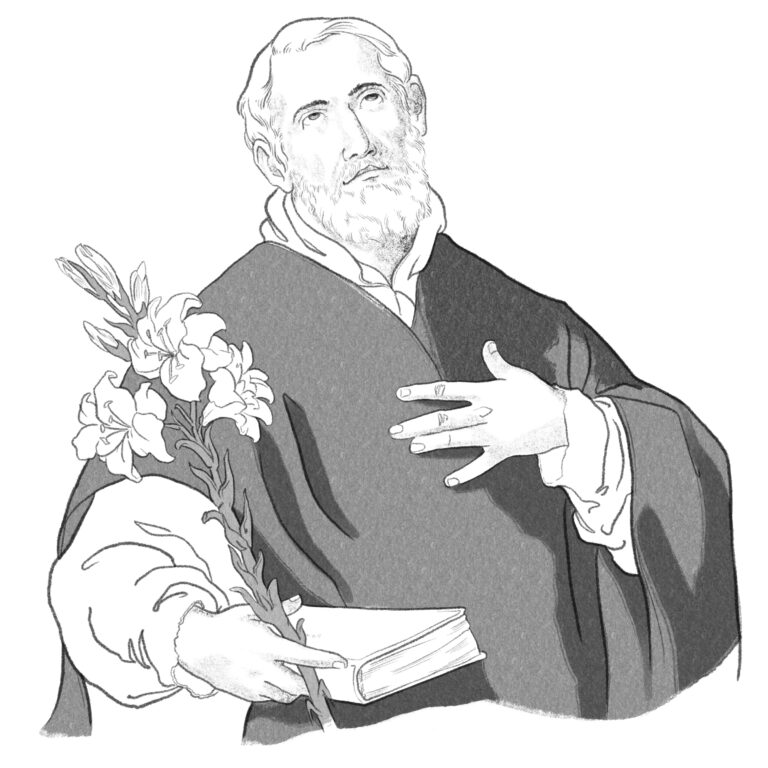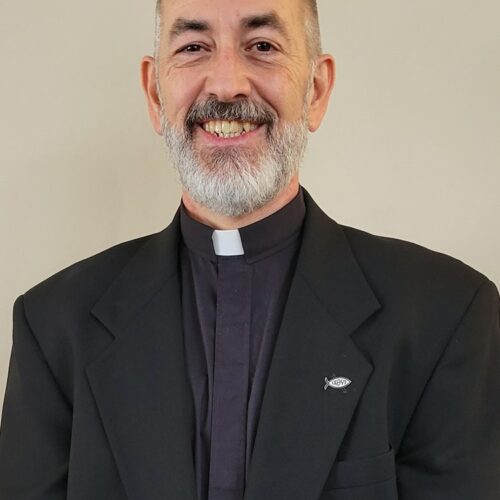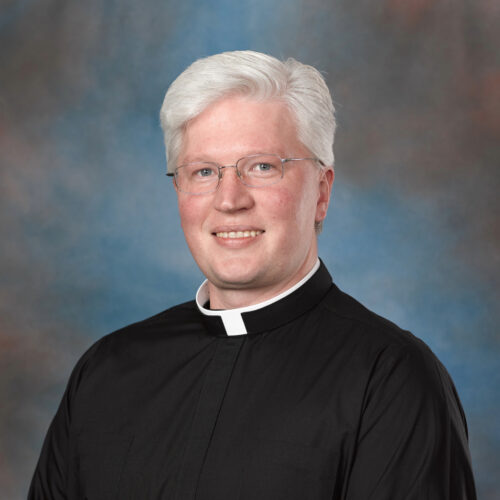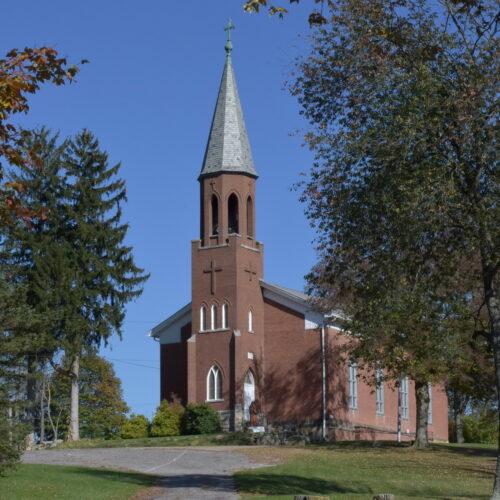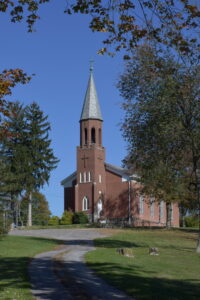The “march of the Eucharist” across Northeastern Ohio began in the log cabin home of settler Daniel McAllister, who opened it to local Catholics for Mass in 1817. His cherry wood dresser was used as an altar. Dominican Father Edward Fenwick, considered the “Apostle of Ohio” who would later become Bishop of Cincinnati, helped serve this pioneer community located in an area that would become known as Dungannon, and he organized the parish. Parishioners built a brick church, called St. Paul, in 1820, and established St. Paul’s Cemetery on the property with the log cabin. In the beginning, there were 15 families—primarily of Irish descent—but Germans later moved in as well. A settler named George Sloan later laid the groundwork for the town of Dungannon when he purchased 26 acres of land in 1833 and named it after his hometown in Ireland.
The community of St. Paul grew to 900 families in the 1840s, as workers were moving to the area to work on the construction of the Sandy & Beaver Canal. Half of those residents became part of the St. John the Evangelist community in Summitville, but the rest saw a need for a larger parish closer to home. Philip Erhardt donated land closer to the town for this purpose, so the parishioners named their new church St. Philip Neri in his honor when the new structure opened in 1849.
More than 100 years later, parishioners decided to move the original McAllister log cabin on to the new property, to pay homage to their origins. With it, they moved the original logs, and the dresser that served as an altar. Over a decade ago, St. Philip Neri Parish entered a collaboration with St. George Parish in Lisbon, St. John the Evangelist Parish in Summitville and St. Agatha Mission—sharing a pastor and many programs. Masses are offered in the 1849 church building, but they are also occasionally offered in the log cabin, to give visitors a sense of what Mass was like for pioneer Catholics.
Saint Philip Neri was a 16th-century priest who devoted his life to “evangelizing” Rome and was known for his sensitivity in the confessional.
The parish’s choice of his patronage is a nod to a person who made the founding of the community possible, as well as an acknowledgement of their devotion to the Church and the Sacraments.
Description from The March of the Eucharist, 2nd edition (2025) published by The Catholic Echo

